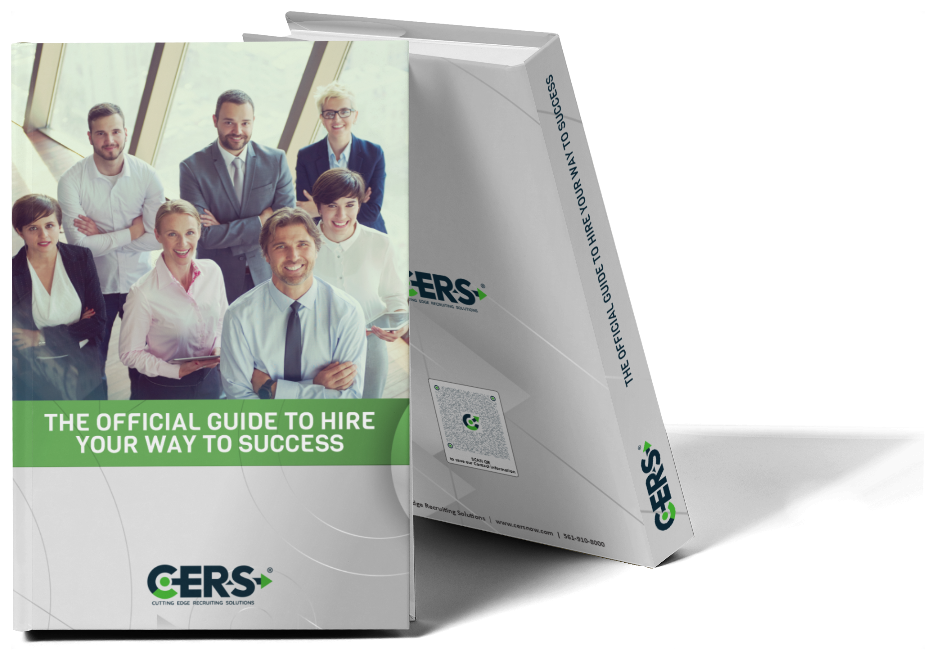Think back to your high school days and your experiences with “the cool crowd.” You may have been a part of it, or you may have wanted to be a part of it. (Or you were truly cool by not caring either way.)
Chances are, most of your fellow high schoolers felt a certain way about “coolness” – either they, to some degree, envied those designated as cool, or they felt satisfied they were designated as cool.
Of course, as we age, our perceptions of what’s cool obviously tend to change. We care less of what others think so we can focus on what we truly want out of life. Where’s the coolest place to grab brunch, to go on vacation, or to work?
Being employed by a cool workplace may not matter to most people, since the majority of the workforce no longer has the mentality of needing to be “in” with the cool kids. Plus, people will be fine working at a company that will pay fairly, respect them, and afford them a satisfactory amount trust & autonomy in a role that they find fulfilling.
But still, a company having a certain “cool factor” still has benefits that business leaders or managers may overlook. Advertising the specific reason why your company is special is something that could get a higher number of talented passive job seekers to apply, or even be the deciding factor on whether or not a potential candidate accepts a job there.
In this article, we’ll explore what some companies do to stand out as one of “the cool kids” – and if your company should bother implementing some of these tactics or merely focus on communicating core value, focus, and what makes them different from their competitors.
What exactly makes a company cool?
Everyone is different and has different opinions on what makes a company a great place to work. For some, it might be a diverse blend of employees of various backgrounds and viewpoints to encourage thoughtful discussion and collaboration; for others, it might be simply having access to specific benefits or perks.
Check out the following examples of what specifically gives these companies their cool factor:
Authenticity/integrity in its mission statement or core values: American Express is widely known for its commitment to customer service, and it’s reflected in their values found on their corporate website. Their employees emphasize teamwork and are empowered to support their customers in any way possible.
Flexible schedules / Work-from-home options: GE offers flex-time, telecommuting, and remote work arrangements for many salaried employees as a means of supporting employees’ personal commitments as well as the success of the business. In fact, many larger companies have adopted this policy to help with attracting talented young professionals who place more value on work-life balance.
Generous / “unlimited” vacation packages: While there’s no requirement to provide vacation or PTO time in the US, most workers can expect around 2 weeks of paid time off a year. Salesforce offers its new employees 15 days of PTO (or 3 weeks off) and also provide four floating holidays and seven paid volunteering days, according to reports from Glassdoor. Companies with unlimited vacation time, such as Netflix and LinkedIn, give their employees the freedom to decide how much time off they should take to relax and decompress (so long as they don’t take vacation during important deadlines or key product launches).
Free snacks, drinks, and catered meals: Complimentary food isn’t a huge deal-breaker for most candidates considering to work at a company, but it is convenient for employees to not have to prepare/bring in lunch or go out to buy it. Employees at media giant Bloomberg have reported on Glassdoor that the variety and quantity of free breakfast, lunch, and snacks positively affects their productivity since they don’t have to leave the office to re-fuel.
Yearly outings / trips: It goes without saying that teams perform better if they’re all on the same wavelength, and a few companies believe that sending their employees on yearly outings can help foster better working relationships and increase communication. For instance, SendGrid hosts retreats to exotic locations where its employees participate in team-building exercises and relax together outside the office.
A fun, laid-back work environment: You’ve probably heard of companies with ping pong tables, happy hours, at-work massages, impromptu lip sync battles, and other casual perks made famous by Google. This trend has become popular with start-ups and other tech companies who want their workplaces to be considered fun, often emphasizing the importance of work-life balance.
Is your company cool – or does it seem like it’s trying too hard?
Have you ever known someone who seems like they’re trying too hard to get people to like them? It probably happened more often in high school, but there are still adults who have never really grown out of the habit. The same can be said for some companies who want to be perceived as “the cool place to work” but have not invested in aligning their focus and vision to ensure they appeal to the right candidate for their unique culture
In the book Disrupted: My Misadventure in the Start-Up Bubble, Dan Lyons, a former Newsweek tech journalist and editor, details his being hired at HubSpot, a marketing software start-up company. Within the first few chapters, he likens his new workplace to his children’s preschool: “lots of bright basic colors, plenty of toys, and a nap room with a hammock.” He also notes that everyone that works there is young – most have just graduated from college.
“On the ground floor an enormous conference room doubles as a game room, with the requisite foosball table, Ping-Pong table, indoor shuffleboard, and video games. The cafeteria next door boasts industrial refrigerators stocked with cases of beer, cabinets with bagels and cereal, and, on one wall, a set of glass dispensers that hold an assortment of nuts and candy…It’s a young place, with lots of energy. Teams go on outings to play trampoline dodgeball and race go-karts and play laser tag.”
Sounds like a pretty fun place to work, right? Well, maybe for workers in their 20’s, which is the point Lyons is making; HubSpot has cultivated a workplace environment that specifically appeals to Millennials, who don’t mind working for low salaries in exchange for all the fun stuff in the office.
Hubspot also offers unlimited vacation time as another perk, which might sound appealing to job seekers if they’re expecting a lower-than-average salary. The truth is that this policy is a cost-saving measure; with a traditional vacation plan, a company sets aside a cash reserve to cover the cost of vacation days it owes to its workers, but without any sort of plan, it doesn’t have to set the cash aside, nor does it have to pay workers for accrued vacation time when they quit or get fired.
Of course, companies trying to save money isn’t a new concept, and they shouldn’t be too severely criticized for doing it. If a company wants to drive down the cost of labor with a laid-back work environment and fun perks, and the employees are okay with that trade off, so be it, as it works for them.
Sure, ping pong tables, beer o’clock Fridays, and free meals and snacks are an easy and relatively inexpensive way to entice job candidates to apply to a company. However, keep in mind that sometimes these perks may have been implemented to outweigh potentially negative aspects of a work environment, such as long working hours, being available for work 24/7, or even employee retention issues. A few superficial bandages like beanbag chairs or an Xbox in the break room can’t fix deeper, unresolved problems within a company’s culture or misalignment of their core values.

Appeal to candidates without resorting to stereotypical start-up culture perks
Conveying that your company is a cool place to work doesn’t necessarily mean incorporating start-up-like perks to facilitate a more fun and comforting environment at the risk of being perceived as a less-than-stellar company trying to overcompensate for its shortcomings.
In 2004, Google famously revealed a new “20 percent time” policy which allowed employees to take time out of their core job duties to work on creative and/or experimental projects. This extra time eventually led to several of the company’s most successful products, such as Gmail and Google News. It wasn’t before long that other tech companies like Facebook and LinkedIn also implemented their own versions of 20 percent time.
These companies are large enough to be able to afford to try out such a risky policy change, but it can be more difficult for smaller companies to try to encourage its employees to do something similar. One way you can leverage a version of 20 percent time is to advertise it as opportunities for professional development (but only if this is part of your core values and focus for the direction of your company).
You could allow employees to work on relevant side projects as a means for them to develop certain skills or competencies that could further their career and also your organization. In lieu of establishing a rigid schedule for employees to work on their side projects (since there may be employees who don’t care to work on alternative projects), encourage them to take occasional breaks from their core duties and “productively” take breaks by learning new technologies, attempting an assignment from another department, or maybe even learning a new language (if it benefits the business).
This flexibility of alternative work embraces creativity and ensures a positive, engaged culture. It could even get employees from departments who don’t normally interact with each other to get together and potentially solve unique problems thanks to increased collaboration and the introduction of an “outsider’s” viewpoint.
Some companies have begun to introduce “gamification” of company metrics to increase employee motivation and engagement – in other words, to make work more like a game as an attempt to improve productivity.
A call center outsourcing company reported that they were able to reduce call times while increase sales and customer satisfaction rates by introducing game elements to reward employees. The company also added badges and rankings to motivate its workforce, which drastically reduced training time from four weeks to 14 hours.
Additionally, adding game-like elements to performance updates allow for more frequent reviews rather than annual ones so that employees’ work throughout the year does not go unnoticed. Instead, employees earn higher rankings or badges that help determine raises and promotions, as well as promote recognition from colleagues and supervisors.
Gamification can also increase retention – when an employee is engaged and motivated to reach the next “level” of his or her employment, they are less likely to feel stagnant and think of look for employment elsewhere.
Our advice? Communicate what you stand for to ensure the right employees are in the right positions
We get it, some companies are just not perceived as cool or sexy. Maybe an employer is a compliance company or a ball bearing manufacturer — that doesn’t necessarily mean their employees are disengaged and unproductive.
You don’t technically need any start-up gimmicks disguised as perks to be competitive enough to attract talented job candidates to your company. If there’s an established core focus and set of values that the company prides itself on, and encourages its employees to practice, that energy and focus will be felt by job seekers through phone conversations and face-to-face interviews. (Of course, this is assuming you don’t need to first fix your recruiting and hiring process or your quality of job ads.)
If the end goal is to get more Millennials or Gen Z-ers to join the company, feel free to incorporate fun but unsubstantial perks; just be aware that more talented and/or experienced candidates considering your company might see right through them.
Invest your time in making sure the company’s core values and focus are understood and portrayed by all your employees. Then, and only then, look to see if these “trendy” perks are right for your company and the candidates you wish to attract. Ask your current management staff (who should have already bought in to your culture) how they feel about these perks as it relates to courting new talent. They will be your best sounding board while promoting a sense of transparency.
No job is sunshine and rainbows all the time, so communicating unappealing aspects of a job to ensure job fit instead of ignoring or downplaying them and covering them up with shiny distractions is a better long-term strategy to hire the “right people.” If that scares away candidates who won’t fit well in your company, it’s better to know at the beginning as it will save you valuable time and money. Think about it, how many stories do you hear managers telling about letting someone go too quickly? Usually it’s about holding on to poorly aligned candidates who are causing issues too long.









